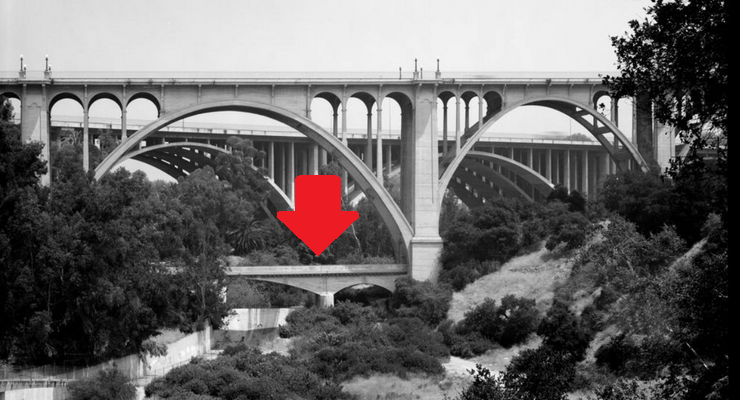
“The draft environmental document is complete and being reviewed by city staff,” Rick Gould, Executive Director of One Arroyo Foundation, said.
“That environmental document is critical to moving the project forward. It’s realistically the last step before we complete construction plans and move forward with the city to do the construction portion of the demonstration project.”
Prepared by Psomas Environmental, the document is recommending a Categorical Exemption for the One Arroyo Trails project.
A Categorical Exemption means an exemption from the California Environmental Quality Act (CEQA) for a class of projects that does not have a significant effect on the environment.
The trails portion of the project is about 75 percent of the whole One Arroyo project. About 10 percent of the project, the Parker-Mayberry Bridge, will still require further environmental review, which Gould said is currently ongoing.
“So we’ve essentially broken the demonstration projects into two phases: Phase 1 is the trail’s restoration and enhancement, and Phase 2 will be work on making the Parker-Mayberry Bridge (a span directly underneath the Colorado Street Bridge) accessible as a trail crossing over the creek,” Gould said.
As the environmental review was being prepared, One Arroyo Foundation and RJM Design Group were working on the construction documents that will be submitted to the city when the environmental review is approved.
The Foundation is anticipating that work on the trails could begin in early 2023.
“We’ll be working directly with city staff, particularly in the Public Works Department as well as Parks and Recreation on developing the final plans and getting them ready to seek bids for construction,” Gould said.
Background
The One Arroyo Foundation is a product of the consultation process that the Arroyo Advisory Group started back in early 2017 to elicit community support and start raising funds for improving the Arroyo Seco as Pasadena’s great outdoor space.
“One Arroyo” was actually the name given to the historic restoral, renewal and rehabilitation plan of the watershed area in and around the area of the Rose Bowl.
Early this year, the One Arroyo Foundation received a $1 million grant from the Santa Monica Mountains Conservancy, with the support of City Council, to restore and reunify the Arroyo Seco trail network in Pasadena – considered one of Pasadena’s most treasured natural resources.
Overall, the Foundation’s primary focus is to raise an initial $7 million for the completion and maintenance of demonstration projects at key connection points within the Arroyo Seco, such as Hahamonga’s Woodland Loop and the Colorado Street Bridge streamside walk.
“I would say generally that the two locations where we are doing most of the trail restoration and enhancements are areas that are critical linkages between the different parts of the Arroyo – the Hahamongna Park, the Central Arroyo, and the Lower Arroyo,” Gould said.
“There are areas of those trails that have significant erosion or are in need of some type of repair or restoration. And when the project occurs, then those trails will be easier to navigate. We think that it will open up new opportunities for people to explore the Arroyo as well as use it for exercise or access to the environment.”
The Foundation said it remains committed to the vision statement that the Arroyo Advisory Group developed in 2017, which states that “Pasadena’s great outdoor space, the historic Arroyo Seco, will become One Arroyo. From the headwaters in the north to the tributary waters in the south, its valuable resources, including natural habitats, recreational and cultural venues, and historic sites, will be preserved, enhanced, and connected by an extraordinary end-to-end trail system.”
Through a comprehensive community outreach plan developed by the Arroyo Advisory Group, a survey in the fall of 2017 garnered 2,652 responses from individual community members and over 100 stakeholder organizations in Pasadena,confirming the community’s interest in improved amenities, especially trails, and in their appropriate maintenance.
“It was proved that the concept of the Arroyo One Foundation could work in partnering with the city to continue to improve the Arroyo as a whole,” Gould said.
“Now that these projects are actually becoming real and we’re moving towards the construction phase, we’re beginning to have discussions internally about what our next project might be.”
To learn more about the One Arroyo project, visit www.onearroyo.org/vision.














 5 comments
5 comments



